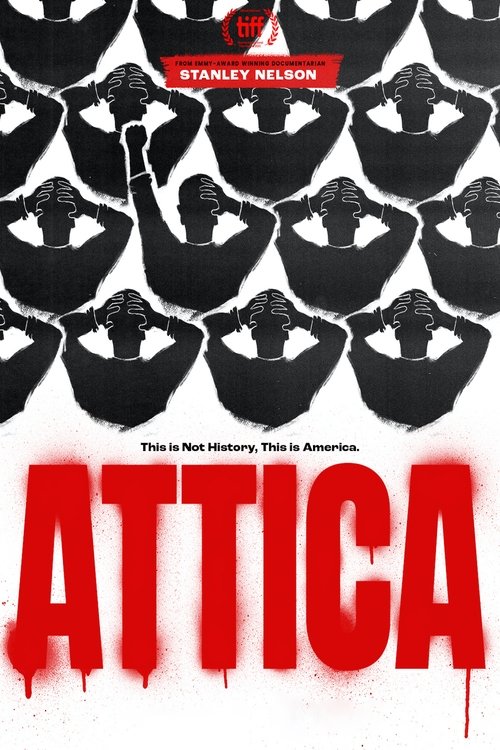Cast
View AllCrew
Director
- Traci A. Curry
- Stanley Nelson
Writer
- Stanley Nelson
Producer
- Stanley Nelson
- Traci A. Curry
Reviews
CinemaSerf
This is a rather standard documentary telling of the revolt by prisoners of New York State's eponymous maximum security prison. Using a combination of newsreel archive footage and modern-day interviews, Stanley Nelson endeavours to explain just why this happened and what led to a final solution that shocked a nation. It's clear that tensions were running high between the inmates and those who were guarding them. A toxic environment of racism, bigotry and bullying set amidst some fairly abject squalor and, as just about everyone agreed, some inhuman conditions in which they were expected to live and work. The thrust of the piece deals with the attempts to negotiate a settlement that would see improvements made, amnesties given and 39 hostages released. It does have access to some of the now released prisoners but there are no contributions from anyone on the authorities' side which is a bit of a shame as the narrative tends to the lop-sided. We are encouraged to feel pity, even anger, for these appalling standards of living without ever really being aware of just why many of these 25-life characters were in there in the first place. What do we know of their own attitudes to treating others like human beings when they were perpetrating the crimes that caused their incarceration? Most seem to be African American so excuses are predictably made about upbringing and desperation, but these seemed to me more likely to empower a state to feel confident it's broader, law abiding and probably quick to judge population would support a more brutal solution rather than seriously consider a peaceable one. That's what I felt was missing here. There's no balance nor serious attempt by the film's makers to illustrate the rock and a hard place scenario this put prison governor's across the country in should one riot prove successful - especially on day 4 when one of the warders dies of injuries in hospital. On that latter point, there are some contributions from his family, and others, which does rather poignantly point out that no amount of money is going to compensate for a lost loved one, and in the end it rather left me with another clear indication that prison is not about rehabilitation, it's about control. This is too long, and could easily have been condensed down as the points it was trying to make, coupled with the factual elements of the incident itself, rendered it quite susceptible to repetition and quite a bit of one-sided speculation. Clearly being black in the USA in 1971 was still going to see you subject to persecution, humiliation and hatred but didn't we all know that already?
Jan 1, 2025
Thematic Analysis
Attica represents a fascinating example of Documentary cinema, offering viewers a unique perspective on the human experience and societal structures. The film's approach to its themes demonstrates a creative vision that distinguishes it within its genre.
Director Traci A. Curry brings their distinctive visual style to this film, continuing their exploration of themes seen in their previous works while adding new elements. Their approach to pacing and visual storytelling creates a viewing experience that rewards close attention.
Released in 2021, the film exists within a cultural context that continues to evolve with our understanding of its themes. Its critical acclaim reflects its artistic achievements and its place in cinema history.
Did You Know?
- The production of Attica took approximately 5 months from pre-production to final cut.
- The final cut of the film runs for 117 minutes, though the director's initial assembly was reportedly 144 minutes long.
- The director insisted on using practical effects whenever possible, reserving CGI for only the most necessary scenes.
- Several scenes were filmed in multiple locations to capture the perfect setting.
- The cast underwent specialized training for 8 weeks before filming began.
Historical Context
- In 2021, when this film is released:
- Climate change mitigation had become a central policy concern internationally.
- Artificial intelligence was becoming increasingly integrated into daily life and creative industries.
- Streaming platforms were disrupting traditional distribution models and changing how audiences consumed films.
How This Film Stands Out
While Attica shares thematic elements with other films in its genre, it distinguishes itself through its unique approach to storytelling, visual style, and character development.
Unlike Shutdown: The Rise and Fall of Direct Action to Stop the War, which focuses more on action than character development, Attica subverts genre expectations by exploring its themes with greater nuance.
While films like Ghosts of Attica and God and Devil on Top of the Wall explore similar territory, Attica stands apart through its deeper exploration of its central themes and more complex characterization.
This film's unique contribution to cinema lies in its bold artistic choices and willingness to challenge viewer expectations, making it a valuable addition to its genre.














